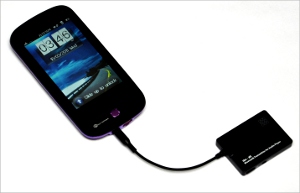HTC Incredible S, which was unveiled by the company during the Mobile World Congress last month, is now available in India though the company is yet to announce its formal launch in the country.
According to reports, the Android based smartphone is available in stores in India and has been priced at Rs 27,500.
HTC had also showcased its Desire S, and Wildfire S smartphones along with the Incredible S at the Mobile World Congress in February 2011.
The Incredible S is based on Android 2.2 operating system. It has a 4-inch WVGA Super LCD display, along with an 8-megapixel camera with dual flash, DLNA, 1.3 MP front facing camera.
It features the HTC Sense user interface, which made its debut in HTC HD2 in 2009.
The phone features a 3.5 mm stereo audio jack, standard micro-USB (5-pin micro-USB 2.0)
Its rechargeable Lithium-ion battery, with a capacity of 1450 mAh, provides Standby time of up to 370 hours and Talk time of maximum 580 minutes.
The HTC Incredible S operates on 900/AWS/2100 MHz and Quad-band of GSM/GPRS/EDGE 850/900/1800/1900 MHz.
The 3G enabled phone has GPRS, EDGE. On the connectivity front it has WiFi (IEEE 802.11b/g/n), Bluetooth 2.1 with FTP/OPP for file transfer.
Other features include A2DP for wireless stereo headsets, PBAP for phonebook access from the car kit and Internal GPS antenna. Phone Book Access Profile (PBAP) enables devices to exchange phone-book objects after a Bluetooth connection is established.
It weighs 135.5 grams with the battery.
HTC Incredible S is really fast with its CPU speed is claimed to give 1 GHz processing power.
The smartphone has an internal phone storage space of 1.1 GB, RAM of 768 MB. A microSD Memory card (SD 2.0 compatible) feature is also present.
However, the handset maker claims that the actual available internal phone storage may differ depending on the software configuration of the phone.


 To test the effectiveness and the efficiency we tried it with a stereo Bluetooth headset and as expected it played flawlessly from a distance of five meters with no source of interference. It performed well too when tested from a distance of five meters with a wall in between.
To test the effectiveness and the efficiency we tried it with a stereo Bluetooth headset and as expected it played flawlessly from a distance of five meters with no source of interference. It performed well too when tested from a distance of five meters with a wall in between.